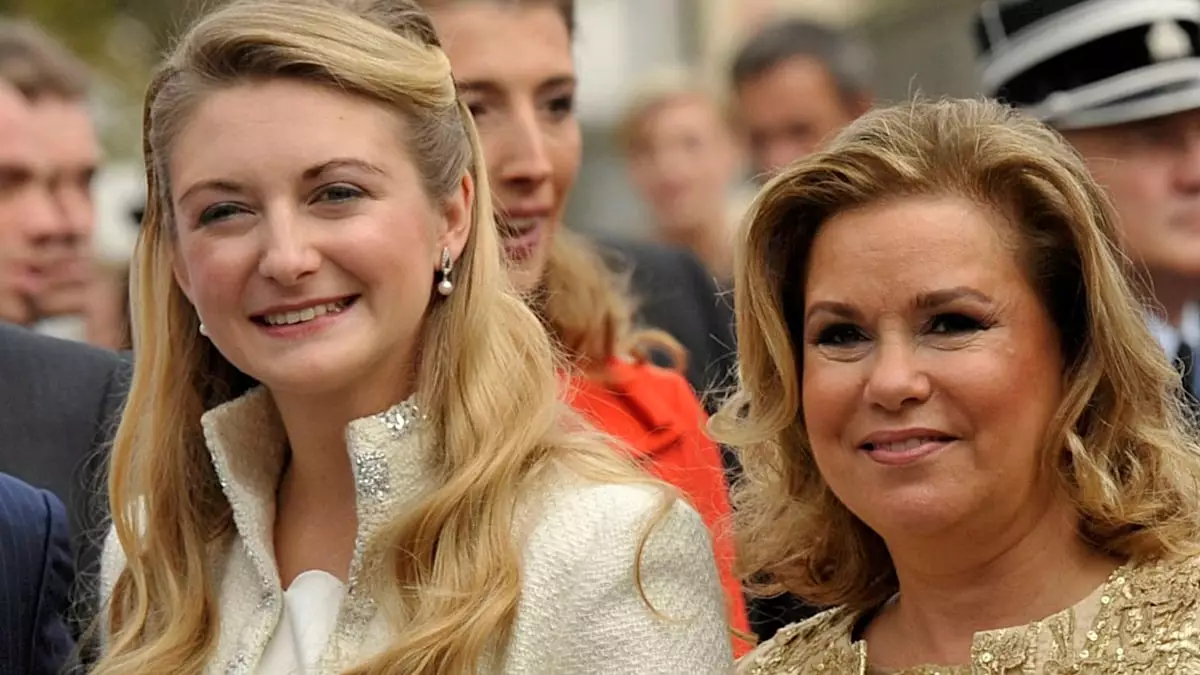In royal families around the world, sartorial choices often embody more than personal taste; they encapsulate legacy and familial bonds. The recent appearance of Hereditary Grand Duchess Stéphanie of Luxembourg at the Singapore State Visit Gala Dinner highlights not just her style acumen but also the strong familial ties that transcend generations. Stephanie’s choice of an Oscar De La Renta gown, originally donned by her mother-in-law, Grand Duchess Maria-Teresa, proves that royal wardrobes are often repositories of shared history and affection.
At the age of 41, Stéphanie showcased an icy blue gown from the Spring/Summer 2012 collection, adorned with exquisite crystals. The gown’s design transformation provides a stunning commentary on individual expression versus traditional expectations in royal fashion. While originally featuring a scoop neckline and a belt to create a more cinched silhouette, Stéphanie’s adaptation of the gown to a higher neckline and streamlined silhouette speaks volumes about her approach to style. This alteration illustrates her keen awareness of current fashion trends while still respecting the history embodied in the dress.
The Significance of Couture Connections
The gown’s journey from Grand Duchess Maria-Teresa to Hereditary Grand Duchess Stéphanie is emblematic of a deeper narrative often overlooked in royal circles: that of familial support and the mutual respect that comes with it. This layering of history and sentiment is something that transcends mere appearances. Maria-Teresa’s initial appearance in the gown during Queen Elizabeth II’s Diamond Jubilee serves as a poignant backdrop, linking two remarkable women through time.
The significance of Augustine’s adjustments cannot be understated; they serve as a symbolic gesture of modernity infused with tradition. In a world where fashion can often feel disposable, Stéphanie’s choice to upcycle this couture piece speaks to a more sustainable approach—an attitude that is increasingly relevant today. Fashion recycling can be a bold statement about values and choices in a royal context, where everything is often meticulously curated for public viewing.
Tiara Tales: A Shared Heritage
No royal ensemble is complete without the dazzling tiara. Stéphanie enhanced her gown with the Diamond Choker Tiara, made by Chaumet and favored by her mother-in-law. This accessory not only complements the gown but also deepens the narrative of familial continuity. Tiara-wearing, a tradition steeped in significance, transcends mere aesthetics; it is emblematic of the duties and roles that come with being a royal.
The tiara adds layers to the evening’s fashion story; it was worn by Maria-Teresa shortly after her own wedding in 1981, linking past to present in a beautiful display of continuity. The choice of accessories and attire is not merely a fashion statement but a firm acknowledgment of legacy and familial bonds, highlighting how each generation reinterprets its past while creating a contemporary identity.
Personal Connections Amidst Royal Duties
Beyond the glitz and glamour, the bond between Stéphanie and Maria-Teresa is also rooted in personal experience and emotional support. Following the loss of Stéphanie’s mother just two months after her marriage, Maria-Teresa stepped in as a pivotal figure in her life. In interviews, Stéphanie has openly praised her mother-in-law for her kindness and support, bestowing upon their relationship a dimension that transcends the superficialities often tied to royal life.
Furthermore, Stéphanie’s affection toward her husband, Hereditary Grand Duke Guillaume, adds another layer to this intricate tapestry of family dynamics. The way she describes him—as “very present” and “attentive”—illuminates the importance of emotional connectivity in navigating the complexities of royal duties alongside personal relationships. This portrayal of intimacy and companionship is not often highlighted in royal narratives, yet it is fundamental to understanding the holistic picture of contemporary monarchy.
As royal families evolve, the dual narrative of tradition and modernity continues to enrich their stories. The intertwining sartorial choices underscore a deeper connection—a testament that even in a world of grandeur, profound emotional ties flourish and define identities, bridging past and present in beautifully complex ways.

